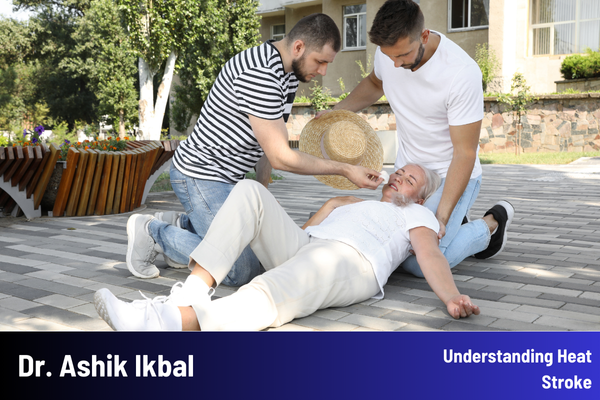Heat stroke is a severe, potentially life-threatening condition caused by the body overheating, usually as a result of prolonged exposure to or physical exertion in high temperatures. Dr. Ashik Ikbal, one of the best general physicians in Kolkata, explains the crucial aspects of heat stroke, its symptoms, and how to prevent and treat it effectively.
What is Heat Stroke?
Heat stroke occurs when the body’s temperature regulation system fails, and the body temperature rises to 104°F (40°C) or higher. This condition requires immediate medical attention to prevent serious complications or death.
Causes:
- Prolonged Exposure: Extended periods in a hot environment, particularly during heatwaves.
- Physical Exertion: Intense physical activity in hot weather.
- Dehydration: Insufficient fluid intake, which impairs the body’s ability to cool itself through sweating.
- Clothing: Wearing heavy or tight clothing that prevents sweat evaporation.
Symptoms:
- High Body Temperature: Core body temperature of 104°F (40°C) or higher.
- Altered Mental State: Confusion, agitation, slurred speech, irritability, or seizures.
- Hot, Dry Skin: Lack of sweating despite the heat.
- Nausea and Vomiting: Feeling sick or vomiting.
- Rapid Heartbeat: Strong or irregular pulse.
Treatment:
- Immediate Cooling: Move the person to a cooler place and remove excess clothing.
- Hydration: Provide cool water or an electrolyte solution if the person is conscious and able to drink.
- Cooling Measures: Use ice packs, cool cloths, or a cool bath to lower body temperature.
- Medical Attention: Seek emergency medical help immediately.
Prevention:
- Stay Hydrated: Drink plenty of fluids, especially during hot weather and physical activities.
- Avoid Excessive Heat: Stay indoors during peak heat hours and use fans or air conditioning.
- Wear Appropriate Clothing: Light, loose-fitting, and breathable clothes.
- Monitor Vulnerable Individuals: Keep an eye on children, the elderly, and those with chronic illnesses, as they are more susceptible to heat stroke.
Conclusion:
Dr. Ashik Ikbal emphasizes the importance of recognizing heat stroke symptoms early and taking swift action to cool the body. By staying hydrated, avoiding excessive heat, and wearing appropriate clothing, you can significantly reduce the risk of heat stroke. If you suspect someone is suffering from heat stroke, seek emergency medical help immediately to ensure prompt and effective treatment.
Understanding heat stroke and taking preventive measures can save lives and ensure a safe summer season for everyone. Stay cool and stay safe!
